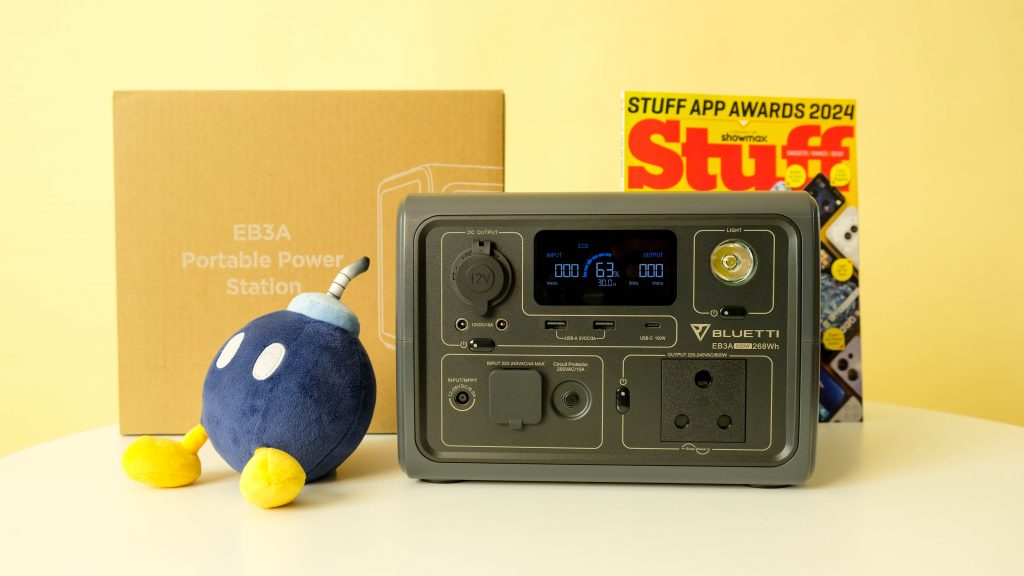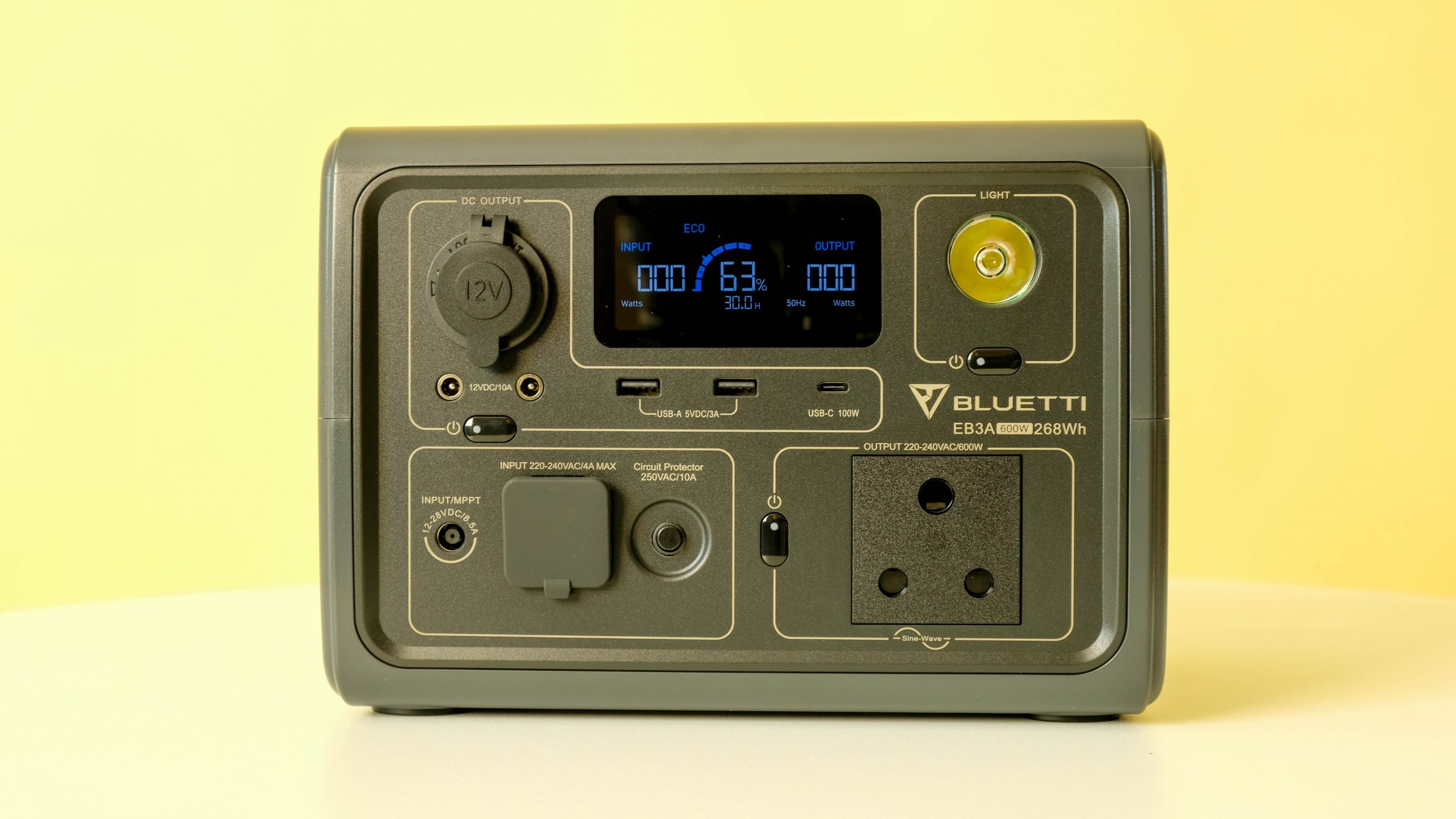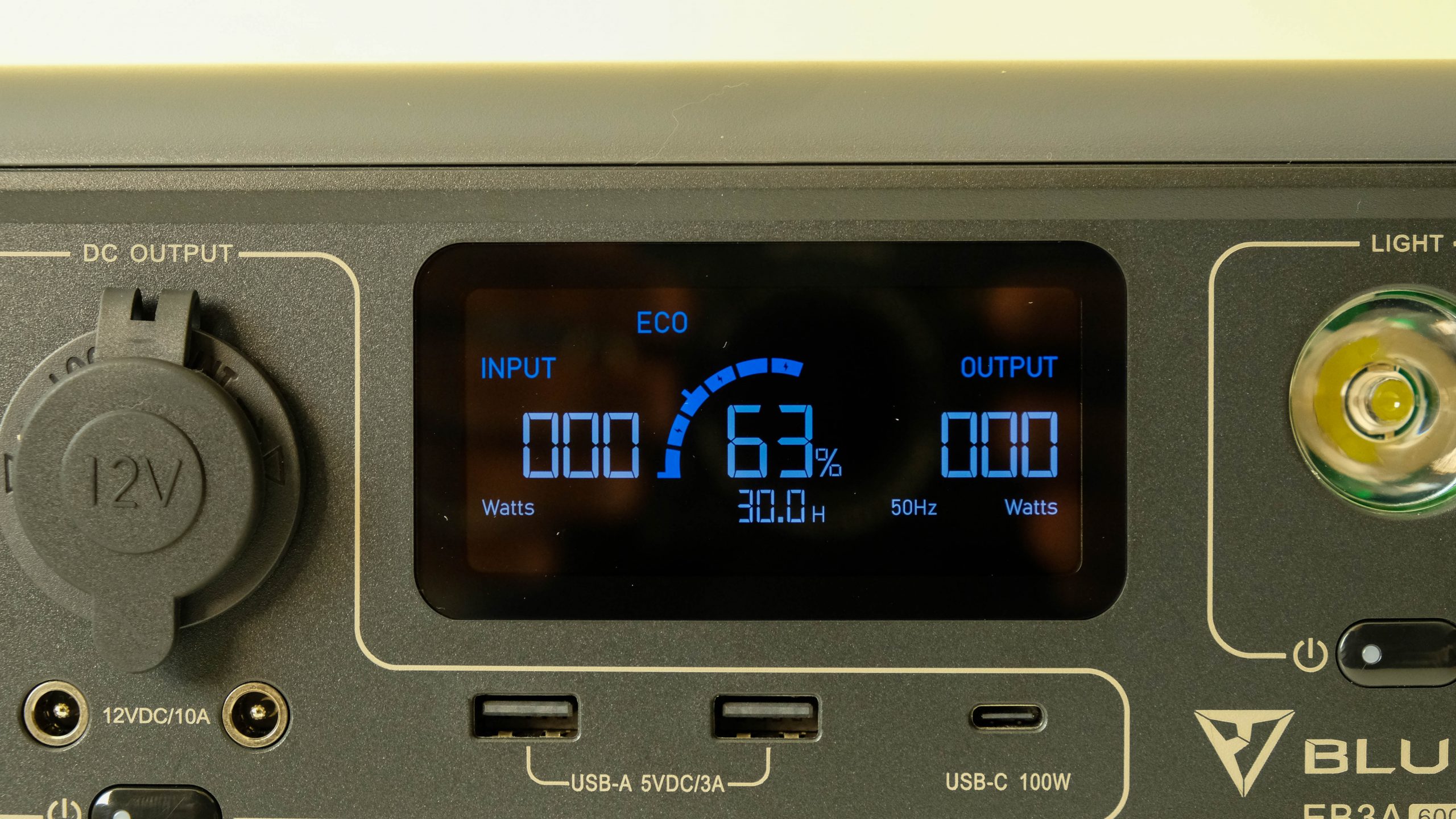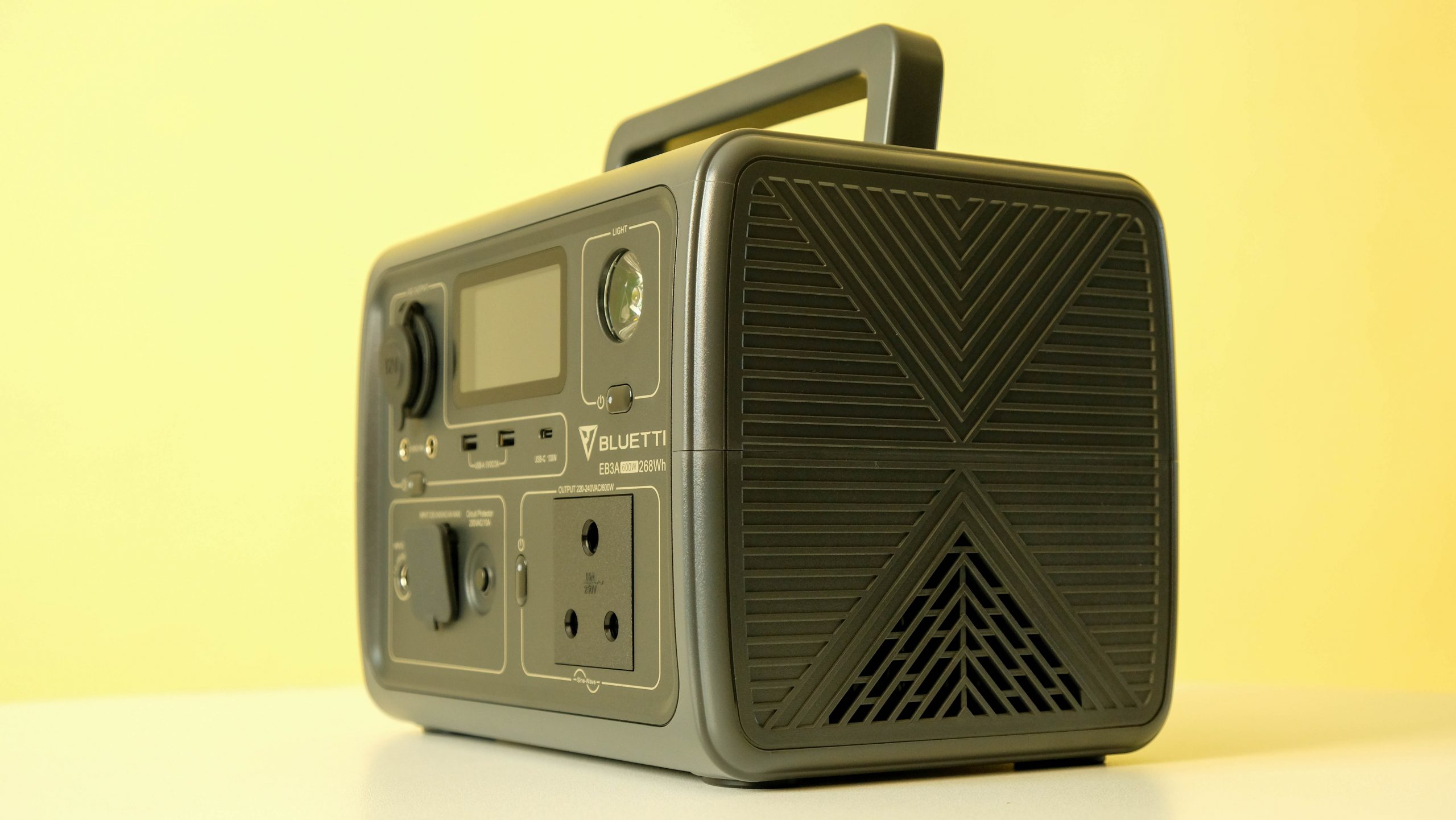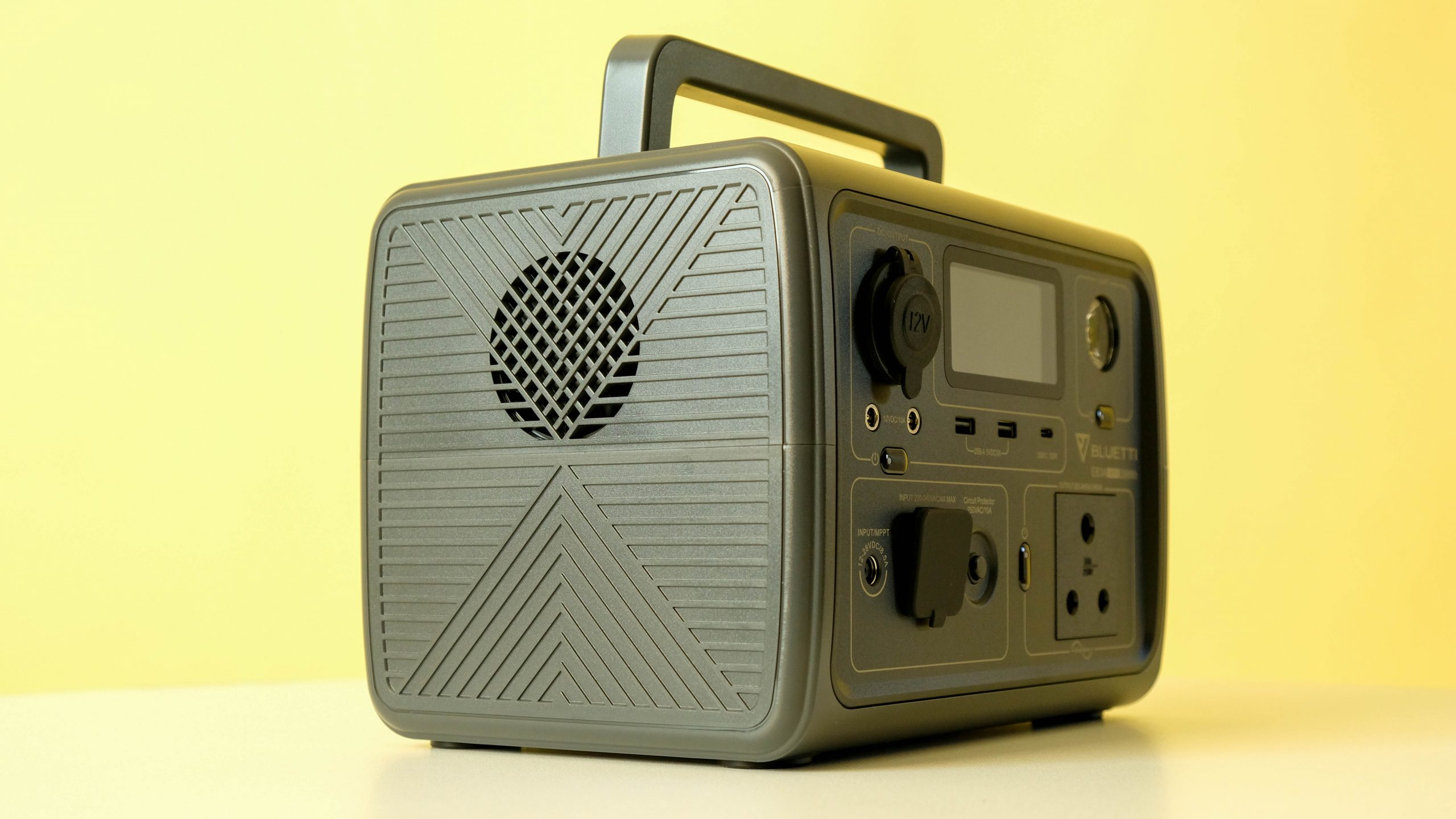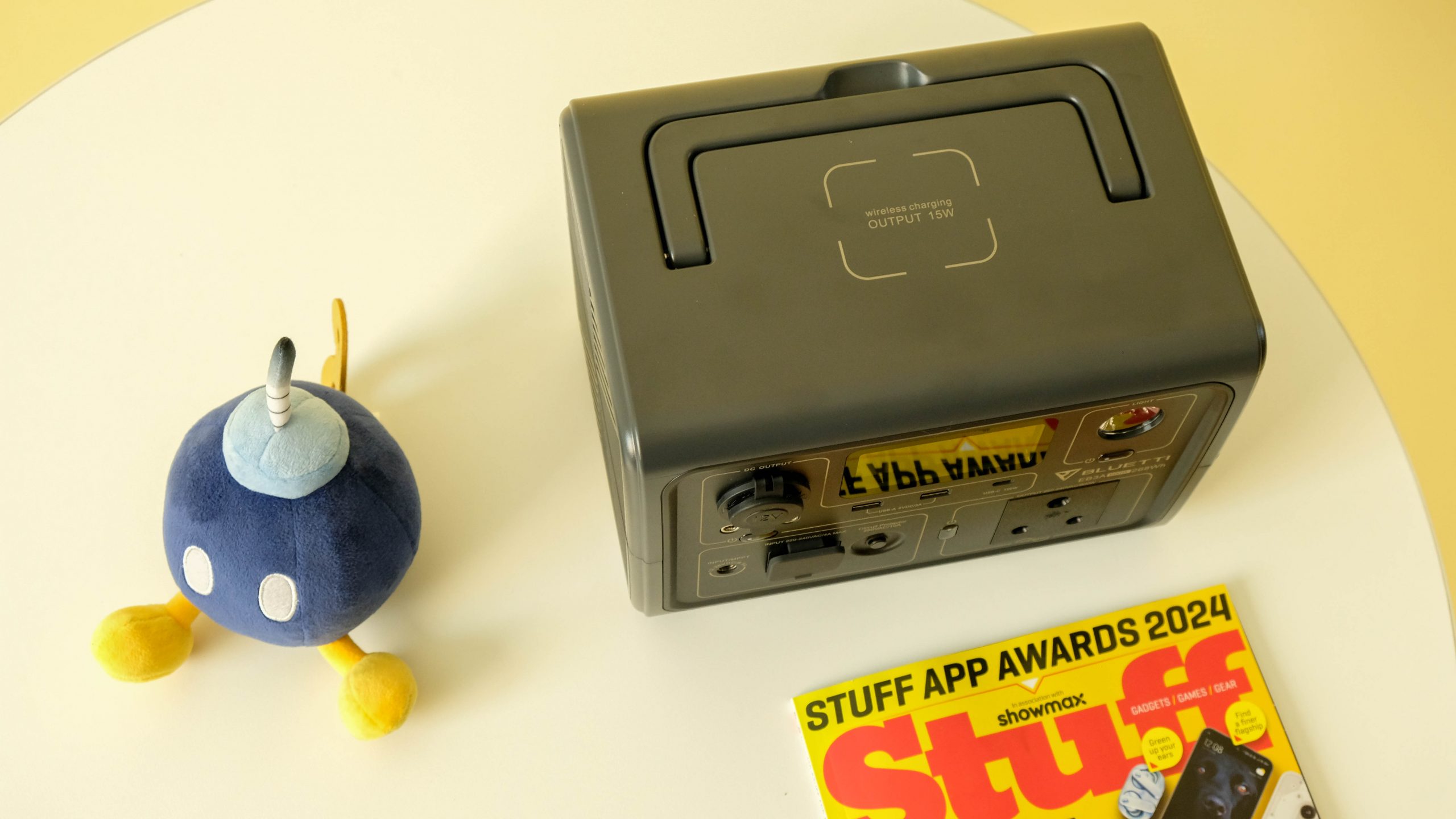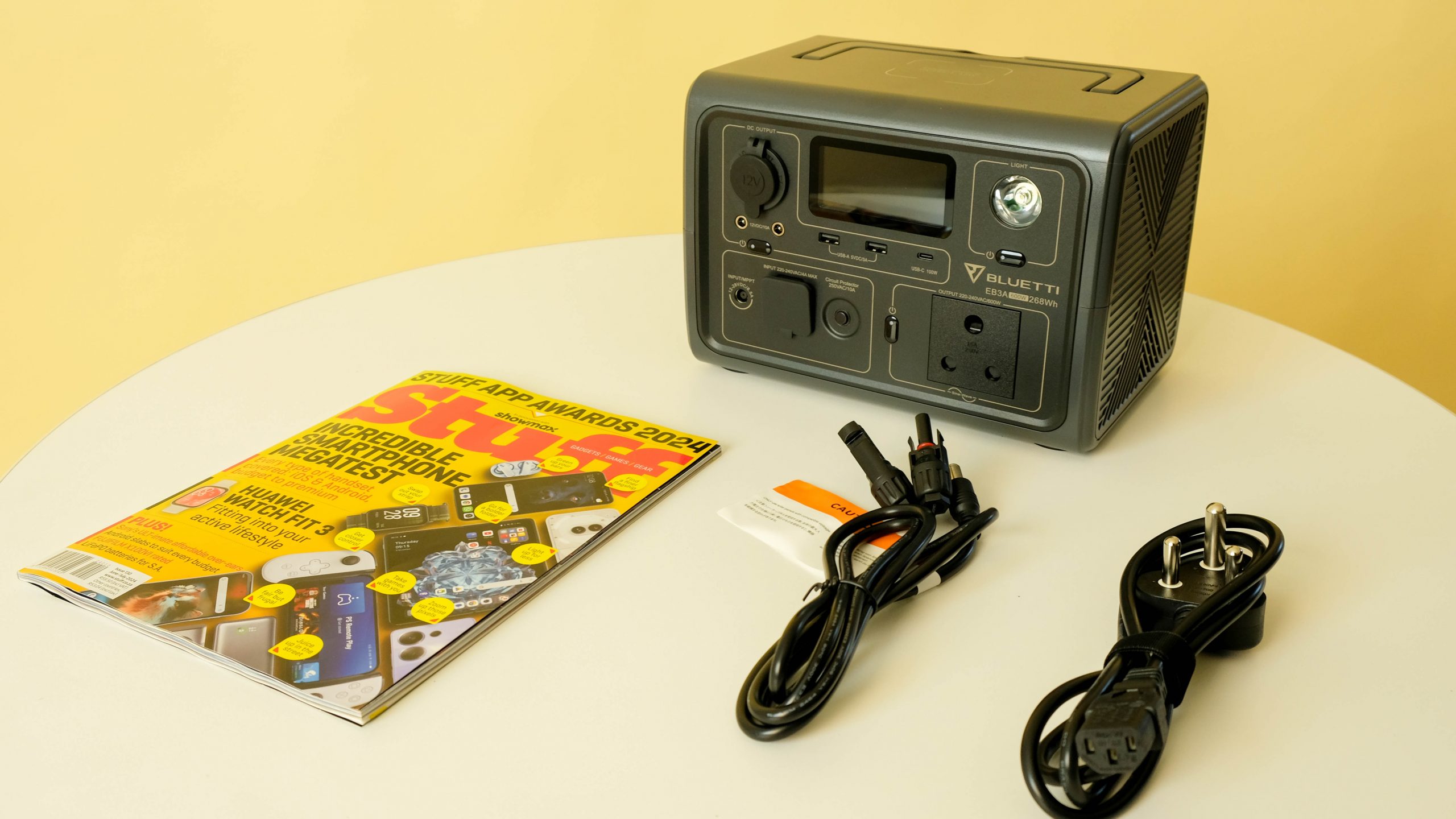Yeah, sure, Eskom is behaving itself now. We might be pessimists but it doesn't seem like this current spell of constant electricity is going to last. Just in case we're not being all doom and gloom, Bluetti's affordable little EB3A battery doesn't take up much space, in your home or in your wallet, and powers enough to keep you working. Or to keep the sportsball going until the end of the match.
-
Ease of use
-
Battery
-
Practicality
-
Value
Is load shedding properly gone, then? Given how far South Africa has progressed through winter, it’s tempting to believe that is the case. But there will always be another power outage or, failing that, a camping trip. Taking something relatively compact, like the Bluetti EB3A, is a handy way to keep your devices topped up for most of a long weekend without hanging around the campsite’s only plug point.
There is, after all, more than one use for a portable power station. They were invented for folks who like to travel away from electricity (but who still need it) rather than a country that has had to treat piped-in power as a luxury for more than a decade. There’s still a case for buying one for your home. And since the EB3A is currently available for R4,000, you might want to do it right about… now.
Cube roots
In terms of design, the Bluetti EB3A is what we’d expect from the brand. This battery’s larger sibling, the EB70, has the same design language and livery but a less well-thought-out layout. When it comes to size, Bluetti’s little battery is almost identically sized to Switched’s 300W/307Wh battery. If not for the difference in internal spec, we might have guessed that these came from the same factory floor.
Bluetti does a decent job of dividing up the different factions here. There’s no single power button. Instead, users can choose one of three options. One juices up the three-prong socket. Another operates the very bright LED light. The third covers USB, DC, and the 12-volt socket. If you’re camping, you’ll probably spend time with all three but the latter’s dual USB-A and lone USB-C ports will be your most important options.
There’s a fourth section, dedicated to inputs. A South African kettle-chord plug (the chord is supplied) is present, as is a DC input if you happen to have solar panels or a compatible Bluetti transformer on hand. An adaptor for the latter is included in the box as well. Like we said, this one is a happy camper.
The sounds of silence
Part of the Bluetti EB3A’s name includes the major specifications. It’ll handle up to 600W of power draw at once and features a 268Wh battery. Weight clocks in at a little under five kilograms, minus chargers and solar panels, so it’s a little weighty for a long hike but not out of the question. It’s perfect for a campsite and stashing in a tent or caravan. It’s also perfect for an out-of-the-way corner waiting the day that your Eskom se Push app chirps at you again with some bad news.
When that day (or your camping trip) comes, it’ll do what it has to do with nary a sound unless you load it right up to nearly maximum capacity. We’re not sure why you’d do that. It’ll only power a small fridge for a handful of hours and it’ll do the same for a diminutive TV for long enough to let you catch the rugby (assuming that’s an option where you are) but larger appliances aren’t really what the EB3A does. Smaller ones, sure, and in enough silence that you’ll find yourself poking a power button to wake up the LED screen to be sure that it’s still on.
That LED is surprisingly informative, showing largely accurate input or output data as needed, as well as the remaining battery capacity and remaining charge/discharge time. The only remaining question is how Bluetti’s Lithium Iron Phosphate (LiFePO) batteries do.
Power slave
If you’re going to hear the fans on the sides of this compact little battery kick in, it’ll be when you connect it to a power source. We’d hesitate to use it as a pass-through source, unless you’re being sneaky about it and utilising one of the more interesting power-up methods we’ve seen.
See, the AC input or the DC input (connected to solar panels or transformer) can be used independently. Or, if you’re feeling impatient, they can also run concurrently. Going from flat to full with the DC charger alone takes a little over an hour, but then the battery is topping out at about 200W of input. Connect two inputs at once and you’ll get closer to the 435W maximum input Bluetti boasts of. Translation? It’ll charge up even quicker.
There is one aspect of usage we’re less fond of. There’s no warning or indicator that you’re about to run out of juice. There’s no tone, just drainage to zero and a sudden lack of power. Since it’s already silent in operation, there isn’t even the sound of a fan spinning down to warn you that it’s out of juice. If you’re working on a laptop, your warning could come too late to save an online document.
But at least there’s app support. Bluetti’s app provides basic input and output data, including how much is coming in (and leaving) from DC and AC sources, with the option to turn off one or the other via a toggle. It’s basic stuff but handy enough if you’re within Bluetooth range.
Bluetti EB3A 600W 268Wh verdict
If you’d like to stick an affordable power station from a known quantity on a shelf, this is a solid option to have in case of emergencies. It’ll power small appliances, sure, but it’ll also keep your laptop and internet running for a solid day and then some, which is what you want from a backup solution. Time is money and all that. It’s still relatively chilly in South Africa but when the summer months land, you’ll be glad to have this and a small portable fan handy if Eskom decides to turn the power off on a 37° day. Or, you know, take it camping. That’s what it was originally made for, after all.

